4-Ethoxyphenylboronic acid
Synonym(s):4-Ethoxybenzeneboronic acid
- CAS NO.:22237-13-4
- Empirical Formula: C8H11BO3
- Molecular Weight: 165.98
- MDL number: MFCD00674028
- EINECS: 680-124-5
- SAFETY DATA SHEET (SDS)
- Update Date: 2023-04-27 16:27:43

What is 4-Ethoxyphenylboronic acid?
Chemical properties
White crystalline powder
The Uses of 4-Ethoxyphenylboronic acid
4-Methoxybenzeneboronic acid is used for suzuki reaction.
What are the applications of Application
Reactant involved in Suzuki cross coupling reactions
Reactant involved in the synthesis of biologically active molecules including:
Novel modulators of survival motor neuron protein for treatment of spinal muscular atrophy
Amino-trimethoxyphenyl-aryl thiazoles for use as microtubule inhibitors and antitumor agents
Bicyclic hydroxyphenyl methanone derivatives for use as hydroxysteroid dehydrogenase inhibitors
Dual immunosuppressive and anti-inflammatory agents
Antiproliferatives via Suzuki cross-coupling / amination reactions
Properties of 4-Ethoxyphenylboronic acid
| Melting point: | 121-128 °C(lit.) |
| Boiling point: | 317.6±44.0 °C(Predicted) |
| Density | 1.13±0.1 g/cm3(Predicted) |
| storage temp. | Keep in dark place,Sealed in dry,Room Temperature |
| solubility | soluble in Methanol |
| pka | 8.98±0.10(Predicted) |
| form | solid |
| color | White to Light yellow |
| BRN | 3530408 |
| CAS DataBase Reference | 22237-13-4(CAS DataBase Reference) |
Safety information for 4-Ethoxyphenylboronic acid
| Signal word | Warning |
| Pictogram(s) |
 Exclamation Mark Irritant GHS07 |
| GHS Hazard Statements |
H315:Skin corrosion/irritation H319:Serious eye damage/eye irritation H335:Specific target organ toxicity, single exposure;Respiratory tract irritation |
| Precautionary Statement Codes |
P261:Avoid breathing dust/fume/gas/mist/vapours/spray. P264:Wash hands thoroughly after handling. P264:Wash skin thouroughly after handling. P280:Wear protective gloves/protective clothing/eye protection/face protection. P304+P340:IF INHALED: Remove victim to fresh air and Keep at rest in a position comfortable for breathing. P305+P351+P338:IF IN EYES: Rinse cautiously with water for several minutes. Remove contact lenses, if present and easy to do. Continuerinsing. P405:Store locked up. |
Computed Descriptors for 4-Ethoxyphenylboronic acid
New Products
Tert-butyl bis(2-chloroethyl)carbamate (S)-3-Aminobutanenitrile hydrochloride N-Boc-D-alaninol N-BOC-D/L-ALANINOL N-octanoyl benzotriazole 3,4-Dibenzyloxybenzaldehyde 4-Hydrazinobenzoic acid 1,1’-CARBONYLDIIMIDAZOLE R-2-BENZYLOXY PROPIONIC ACID 3-NITRO-2-METHYL ANILINE 4-IODO BENZOIC ACID 4-HYDROXY BENZYL ALCOHOL 4-(3-chloropropyl)morpholine phenylhydrazine hydrochloride (2-Hydroxyphenyl)acetonitrile 4-Bromopyrazole 5-BROMO-2CYANO PYRIDINE 5,6-Dimethoxyindanone 5-broMo-2-chloro-N-cyclopentylpyriMidin-4-aMine 4-methoxy-3,5-dinitropyridine 2-(Cyanocyclohexyl)acetic acid 2-aminopropyl benzoate hydrochloride 1-(4-(aminomethyl)benzyl)urea hydrochloride tert-butyl 4- (ureidomethyl)benzylcarbamateRelated products of tetrahydrofuran

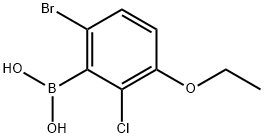
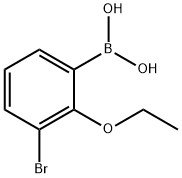
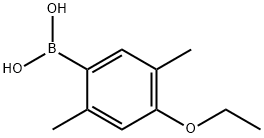
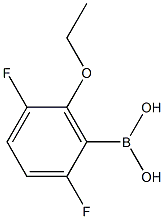
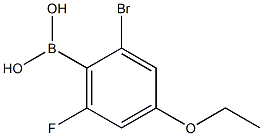


You may like
-
 4-Ethoxybenzeneboronic acid CAS 22237-13-4View Details
4-Ethoxybenzeneboronic acid CAS 22237-13-4View Details
22237-13-4 -
 4-Ethoxyphenylboronic Acid (contains varying amounts of Anhydride) CAS 22237-13-4View Details
4-Ethoxyphenylboronic Acid (contains varying amounts of Anhydride) CAS 22237-13-4View Details
22237-13-4 -
 (9H-fluoren-9-yl)methyl (2,5-dioxopyrrolidin-1-yl) carbonate 82911-69-1 98.0%View Details
(9H-fluoren-9-yl)methyl (2,5-dioxopyrrolidin-1-yl) carbonate 82911-69-1 98.0%View Details
82911-69-1 -
 13057-17-5 95.0%View Details
13057-17-5 95.0%View Details
13057-17-5 -
 4-bromoaniline 106-40-1 99.0%View Details
4-bromoaniline 106-40-1 99.0%View Details
106-40-1 -
 1421517-99-8 99.0%View Details
1421517-99-8 99.0%View Details
1421517-99-8 -
 5-bromo-2-chlorobenzoic acid 99.0%View Details
5-bromo-2-chlorobenzoic acid 99.0%View Details
21739-92-4 -
 15761-38-3 97.0%View Details
15761-38-3 97.0%View Details
15761-38-3
Statement: All products displayed on this website are only used for non medical purposes such as industrial applications or scientific research, and cannot be used for clinical diagnosis or treatment of humans or animals. They are not medicinal or edible.